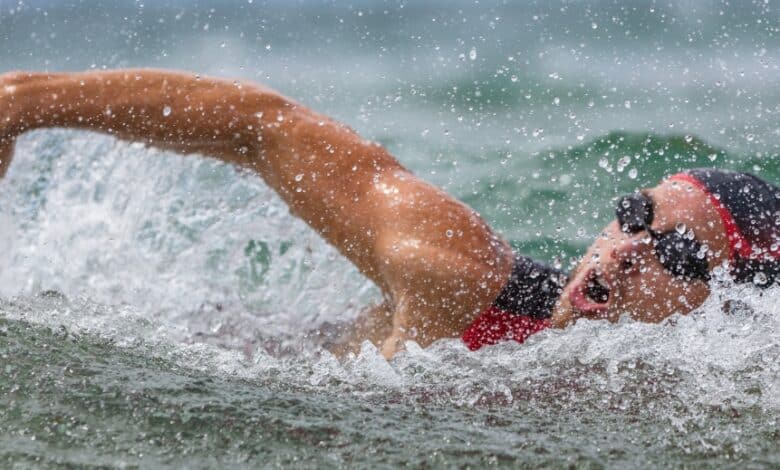Improve your breathing technique in triathlon swimming
In the world of triathlon, swimming is more than just a sport; It is an art that requires technique, endurance and, above all, proper breathing.
For a triathlete, mastering swimming breathing technique not only improves performance, but also ensures a safer and more enjoyable experience in the water.
The Importance of Good Breathing Technique
Breathing in swimming is essential to maintain a constant and efficient rhythm.
Improper breathing technique can lead to rapid fatigue, reduced water efficiency, and increased risk of water ingestion. Therefore, it is crucial to learn and practice the correct technique.
Effective Breathing Techniques
Bilateral Breathing
It consists of alternating breathing between both sides of the body every three strokes. This technique helps maintain balance and body alignment, avoiding overload on one side of the body.
Rhythmic Breathing
Maintaining a constant breathing rhythm is vital. You should inhale quickly during the arm recovery phase and exhale steadily underwater.
Head Position
The head should be in a neutral position, in line with the body. When turning to breathe, only the necessary part of the face should be raised to inhale, avoiding sudden movements that could alter the technique.
Practical Tips to Improve Breathing
Practice Out of Water
Perform dry breathing exercises to improve lung capacity and awareness of your breathing.
Flotation Exercises
Practice floating in the water while maintaining rhythmic breathing. This helps improve confidence and comfort in the water.
Racing Simulation
Train under race-like conditions to get used to the variations in breathing that can occur in a racing environment.
Breathing Adaptation to Different Aquatic Environments
Breathing in the Sea
In the open sea, waves and currents can affect the breathing rate. Practicing with your head higher and learning to breathe on the opposite side of the waves is crucial to avoid swallowing water.
Breathing in Rivers
Rivers, with their variable currents, require an adaptive breathing technique. Breathing facing the current and practicing breathing on both sides are essential to adapt to changes in current direction.
Breathing in Reservoirs
In reservoirs, where the waters are usually calmer, it is important to practice breathing with your head slightly elevated to avoid swallowing water and to adapt to variability in water quality and visibility.
Other things to keep in mind
In addition to adapting to different aquatic environments, triathletes must be prepared to face other challenges that can affect their breathing:
Weather conditions
Wind and temperature can significantly influence breathing. Learning to adjust the frequency and depth of breathing in different weather conditions is essential.
Altitude
Swimming at high altitudes can affect lung capacity and oxygenation. It is important to acclimatize and adjust your breathing technique in these environments.
Competition Pressure
Anxiety and pressure during competitions can disrupt your breathing. Practicing relaxation and visualization techniques can help maintain controlled and efficient breathing.
DMastering breathing technique in swimming is a key component to success in triathlon.
These tips not only improve performance and safety in the water, but also enrich the triathlete's experience in the sport, preparing them to confidently face any challenge that comes their way on the water.
There are no previous results.





























